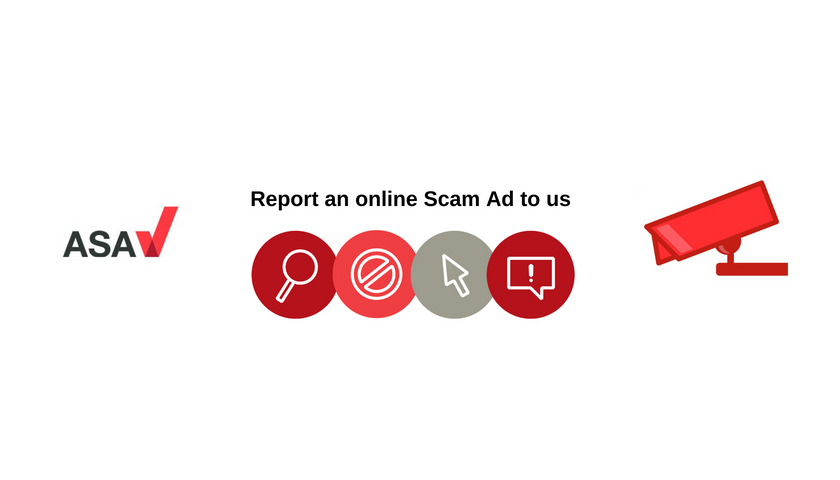The ASA/CAP have released a post called: ASA Scam Ad Alert system: update on numbers and trends. I have enclosed the text of the link below, but please have a look at the ASA/CAP site as there are lots of things of interest to anyone with an interest in Ethical Marketing.
In June 2020, we launched our Scam Ad Alert system in partnership with major online ad and social media platforms to help tackle scam ads online. We launched the system because, while the overwhelming majority of ads responsibly inform and entertain their audience, some are published with criminal intent. Scam ads lead unsuspecting consumers to sites which fleece and leave them out of pocket.
The ad platforms, networks and other companies involved in online advertising who participate in the Scam Ad Alert system are: Google; Meta (Facebook/Instagram); Taboola; Outbrain; Microsoft; TikTok; Yahoo; Snap; Twitter; Amazon Ads; Sizmek Ad Suite; RevContent; Index Exchange; Clean.io; Reach; and the Media Trust.
Our system aims to complement and enhance the work already being done by digital advertising and social media platforms and other regulatory bodies to tackle scam ads and, more broadly, other fraudulent activity online.
We continue to share all Alerts with government’s National Cyber Security Centre (NCSC). They operate the government’s takedown service, which seeks to remove malicious email addresses and websites. They scan the Alert for website addresses (URLs) to find the host website and remove it if it’s found to be malicious. This means that alerts not only result in action against the ads but also the websites they link to, which increases their effectiveness in protecting consumers.
Consumers can report scam ads appearing in paid-for spaces online to us via our online form. We assess reports within 24 hours, enabling us to quickly and effectively alert platforms to scam ads so that they can promptly remove them, suspend the advertisers’ accounts and stop similar ads appearing in future.
12 months on since our last update, we are reporting on how it is performing by highlighting key stats and trends.
Key numbers & platform actions
From 1 March 2021 to 25 March 2022 the ASA has:
- Received 1,251 reports of potential scams via our quick reporting form.
- They resulted in 67 Scam Ad Alerts relating to obvious scams seen in paid-for space online, of which:
- 14 (21%) related to ads seen on social media sites
- 53 (79%) related to ads seen in other online media, such as publisher’s sites, apps, etc
- Platforms responded to our alerts within 48 hours 80% of the time to confirm they had removed the reported scam ad (in total 87% responded to confirm the ad had been removed)
In addition to the above, we asked participating platforms and networks how many ads and accounts they had removed or suspended as a direct result of information provided to them via the ASA’s Scam Ad Alert system over the period June 2020 to September 2021. They reported that:
- Around 765 ads and/or accounts had been removed or suspended as a direct result of information provided via the ASA’s Scam Ad Alert system over the period June 2020 to September 2021, of which:
- 135 resulted from a Scam Ad Alert for an ad seen on their own platform; and
- Around 630 resulted from a Scam Ad Alert for an ad seen on another platform
- Not all platforms participating in the programme had to remove ads as a result of the Alerts.
The data provided was fragmentary, and not all participants provided figures, so it is likely that the figures above understate the impact of the Alerts. The fact that the greatest proportion of ads removed as a result of the Alerts were not on the originating platform but on other platforms demonstrates the clear value of sharing intelligence across platforms.
Scams trends
The majority of Scam Ad Alerts we’ve sent over the last 12 months have been for scams relating to cryptocurrency. However, we also sent Alerts for other scam types, including fake energy saving devices and diet pill subscription scams.
The majority of those scams involved misleading landing pages featuring fake news stories, including fake celebrity endorsements. This has been a persistent theme since the Scam Ad Alert system launched in June 2020, indicating this remains a successful approach for scammers in their efforts to entice consumers to engage with scams.
We always consider whether reports which aren’t suitable for a Scam Ad Alert nonetheless merit action, where sufficient information is provided. This could include: referring clear breaches of existing ASA rulings to our Compliance team; launching a proactive ASA investigation; or providing intelligence to the relevant platform.
We will continue to monitor the performance of our system and work collaboratively with stakeholders to play our part in tackling scam ads online.
Reporting scam ads helps to keep everyone safe online, so if you are concerned about a potentially bogus ad you see in paid-for space online, please report it to us through our form.
